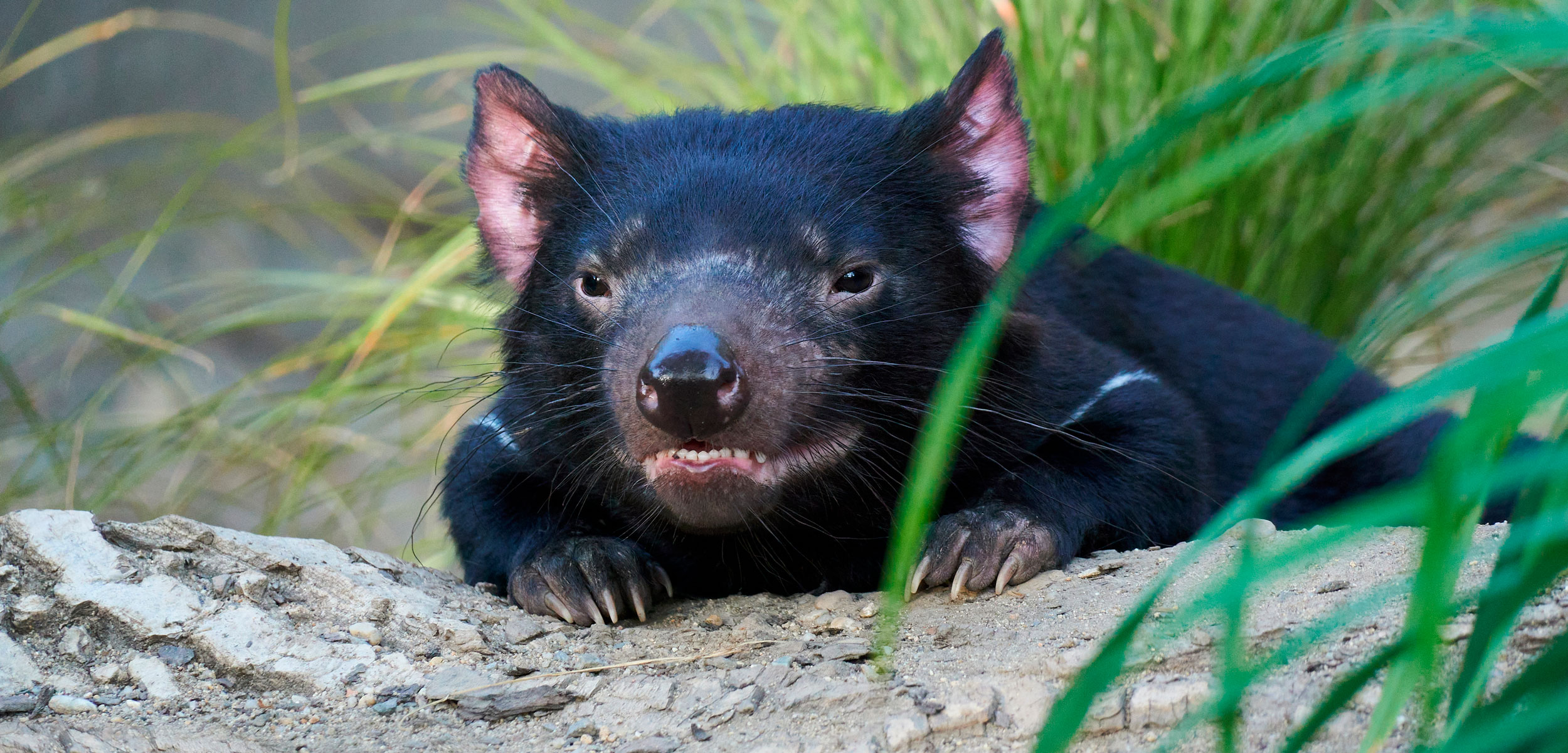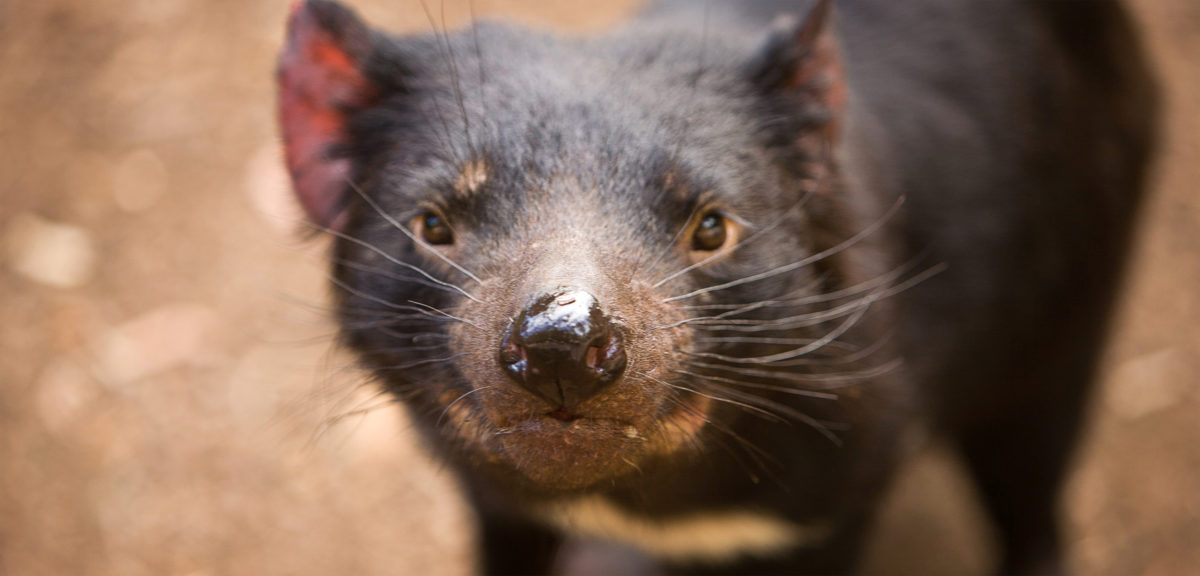The Details Are in the Devil’s Tumors
There are three known wild contagious cancers in vertebrates, and Tasmanian devils have two of them. What does that mean for the endangered marsupials?
Article body copy
This article provides an update to the story “Devils Go to Prison,” published in 2015, which discusses how contagious cancers have ravaged the Tasmanian devil population and the efforts to control the outbreak by isolating part of the population.
Devils Go to Prison
Tasmania’s Forestier and Tasman Peninsulas once segregated criminals from civilization. Now, they’ll isolate Tasmanian devils from a rampant disease that threatens to snuff out the species.
Eight years ago, I first met with researchers from the Save the Tasmanian Devil Program (STDP) in Tasmania, Australia, to learn about their work to protect the endangered marsupials. Since then, I’ve continued to follow this story, including tracking how the Forestier Peninsula devils—the focus of my original article published in late 2015—fared in their “new life.”
Contagious cancers like devil facial tumor disease (DFTD) are virtually unheard of in vertebrates, yet understanding how they’re transmitted and how they evade immune systems has implications for both conservation and oncology. For that research to take place, there needs to be a healthy population of Tasmanian devils. That’s why in late 2015 and early 2016, the STDP released 49 devils bred in captivity on the isolated Forestier Peninsula, to join the estimated 30 wild devils already living on the adjacent Tasman Peninsula. Establishing a new, managed, disease-free population of devils (with another already existing on Maria Island, located just off the east coast of Tasmania) would buy researchers more time to develop a vaccine.
Their release should have been a moment of hope for the endangered species, but it was marred by a discovery some 50 kilometers west, across the sea, on another Tasmanian peninsula. A local spotted a devil with a large facial tumor: the calling card of DFTD.
Routine tests returned an unsettling result—it was a new cancer.
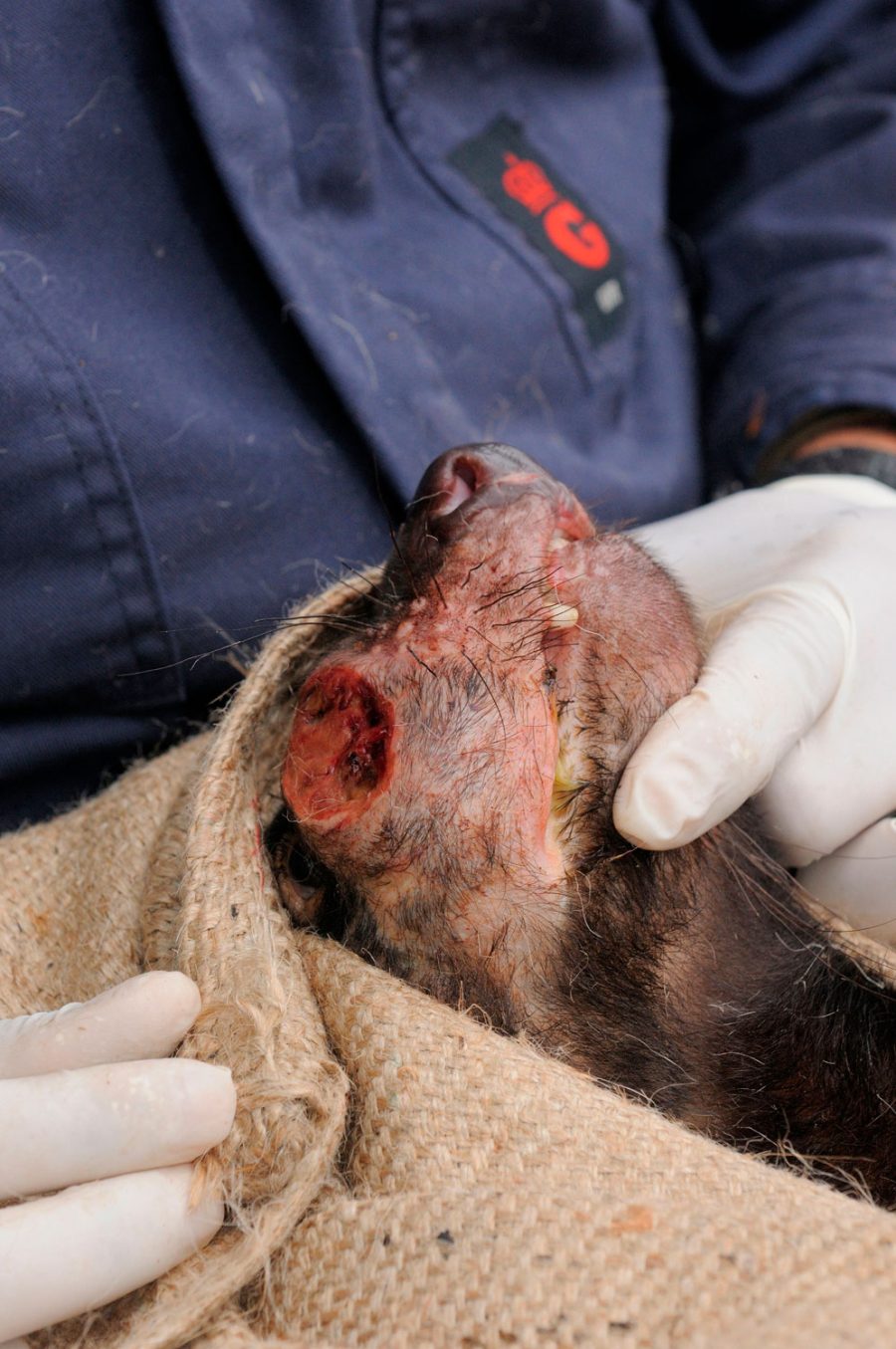
Tasmanian devils are susceptible to two of the three known wild contagious cancers that infect vertebrates. Photo by Dave Watts/Alamy Stock Photo
Called DFT2, the new disease is genetically distinct from DFT1 (the original cancer). Its method of transmission and symptoms are the same, and it poses a severe additional threat to the species.
The discovery of DFT2, however, provides a critical clue to the cancer’s puzzle. Devils, it turns out, aren’t victims of bad luck—they are particularly prone to DFTD. There are three known wild infectious cancers in vertebrates in the world, and Tasmanian devils have two of them.
“It was a big surprise. We thought that transmissible cancers were really rare—like lightning striking—and that devils were just a very unfortunate species,” says Elizabeth Murchison, who researches genetic and transmissible cancers at the University of Cambridge in England. It’s likely that DFT1 and DFT2 weren’t the first cancers to emerge in devils and are unlikely to be the last.
The habit the devils have of biting each other helps spread the disease, and their low genetic diversity creates ideal conditions for the cancers to evade the marsupial’s immune system. Another factor in the devils’ inability to fight the infections could be an issue with their peripheral nervous systems, where both DFT1 and DFT2 seem to originate. What’s likely not to blame, however, is environmental pollutants as suggested in my original article. According to Murchison, the imprint mutations left on devil DNA indicate the two cancers are natural occurrences. “There’s nothing to suggest any external exposure to a chemical or radiation or anything like that,” she says.
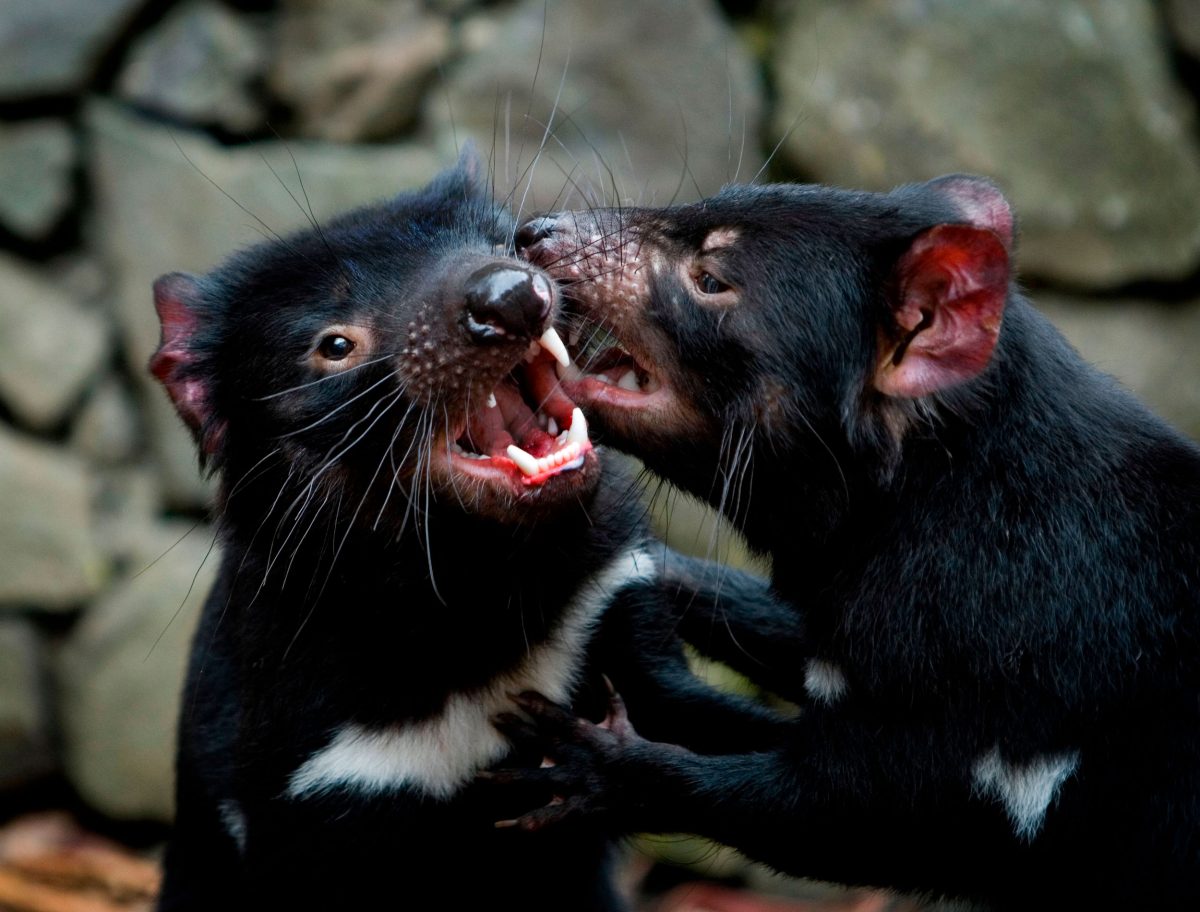
The marsupials have a habit of biting each other, which spreads devil facial tumor disease. Photo by deadlyphoto.com/Alamy Stock Photo
Fortunately, the discovery of the second cancer hasn’t slowed vaccine development. Andrew Flies—a senior research fellow at the University of Tasmania’s Menzies Institute for Medical Research—says the cancers have similarities that will make it easier for his team to develop a vaccine for both. In 2024, tests on an experimental DFT1 vaccine will begin, with the development of a vaccine that targets both cancers already underway. To reach devils, officials will distribute bait drops containing the vaccine through Tasmania’s vast wilderness.
Rollout is still several years away, but devils no longer appear to be at imminent risk of extinction. Exact numbers are unknown, but thanks in part to pilot projects to improve genetic diversity through the release of healthy devils, their population is holding strong in many areas—at least for now.
“Disease doesn’t really make a species go extinct. Diseases push the species to the very edge, and then everything else just comes along and takes them out,” says Carolyn Hogg, a researcher at the University of Sydney, who has been working with threatened species in Australia, including Tasmanian devils, for over 25 years.
For devils, “everything else” includes low genetic diversity, loss of habitat, and road fatalities. The nocturnal scavengers can’t resist the lure of rotting roadside carcasses, easy pickings in the roadkill capital of the world. In 2021, motorists killed more than 100 devils on just one 25-kilometer stretch of road in northwest Tasmania.
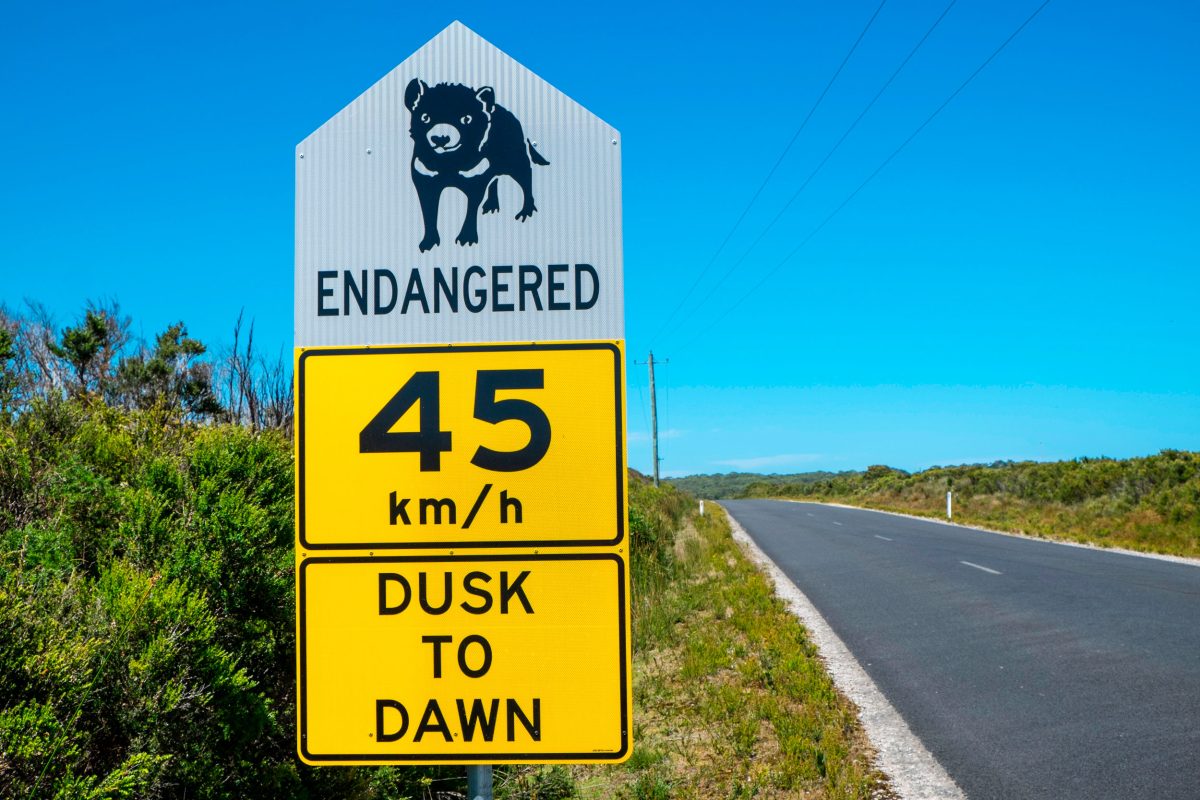
Once released, captive-bred devils have often been found as roadkill. Photo by Rob Walls/Alamy Stock Photo
“If you’ve only got five breeding females in a small population and two get hit by cars on the road, you’ve lost 40 percent of your breeding population in one event,” says Hogg.
That’s exactly what happened to the Forestier Peninsula devils I wrote about in my original article. Drivers killed 16 of the 49 individuals within six weeks of their release. Through subsequent tracking, Hogg and her team discovered that devils raised in captive facilities for generations were more likely to use roadways than wild devils.
“You can’t release them anywhere near any major road systems, because behaviorally they’re used to the sound of vehicles,” says Hogg.
Since then, the STDP has done 11 more releases of healthy Tasmanian devils throughout the state to improve genetic diversity of existing wild populations. What’s changed is that instead of releasing devils bred in captivity, it now relies on the wild offspring of the disease-free population on Maria Island. A national park where there are no cars (save for those used by park rangers), Maria Island has wild devils that aren’t habituated to the sound of traffic and are more likely to survive.
Relying on Maria Island’s wild devils is the best option for building up a population of wild devils until a vaccine is developed. But the introduction of the marsupials to the island—which was devil-free until 2012—still has critics, much as it did back in 2015. In 2021, BirdLife Tasmania reported that over a decade, the introduced devils wiped out the island’s 3,000 breeding pairs of little penguins. Little penguins are found in abundance in the wild: Tasmania has hundreds of offshore islands, with an estimated 110,000 to 190,000 breeding pairs.
“We knew that was going to happen,” says Hogg. A risk assessment, she says, determined that the benefits of having a place to breed wild devils disease-free and improve their genetic diversity was “greater than the loss of the birds.”
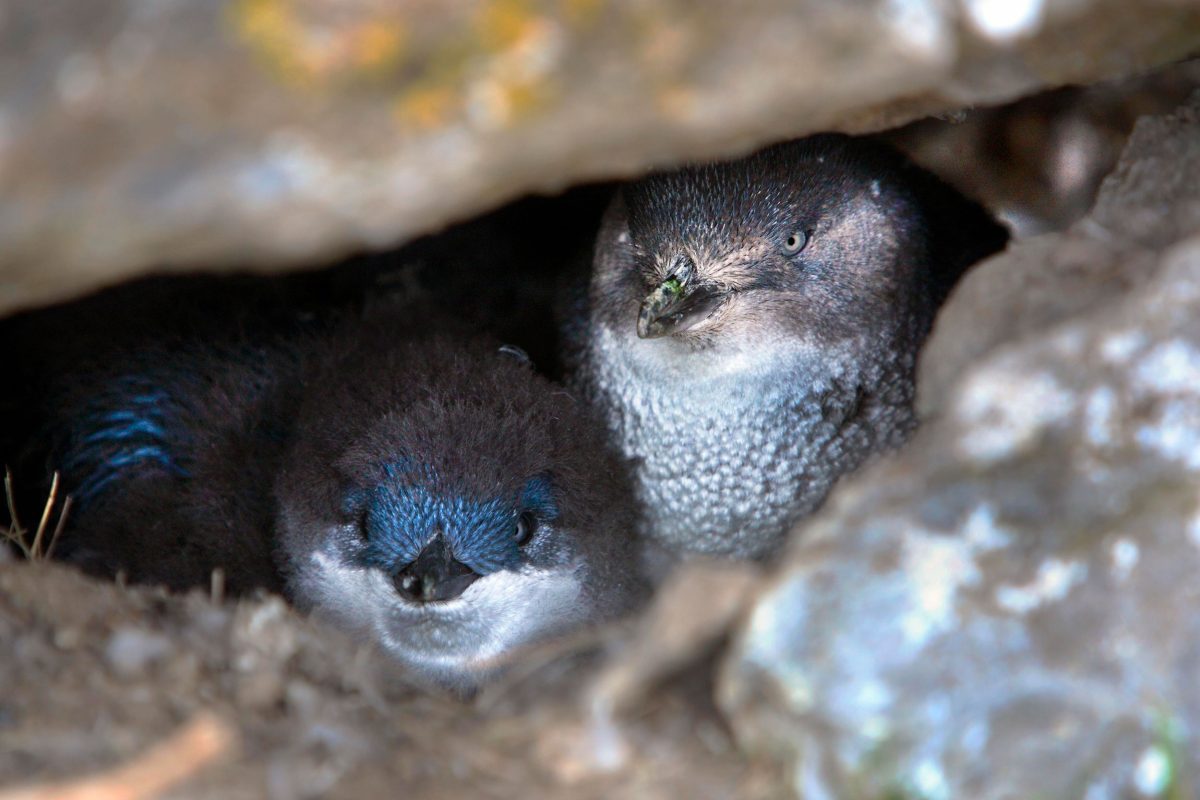
The devils introduced to Maria Island off the east coast of Tasmania, Australia, found ready prey in little penguins. Photo by agefotostock/Alamy Stock Photo
The news, however, is not all bad. Researchers believe that introducing the carnivore has allowed Maria’s population of eastern barred bandicoots—listed as an endangered species on the mainland—to thrive, by pushing predatory possums up into trees. Cape Barren geese—which dropped in numbers following the marsupial’s introduction—have also learned to coexist with devils. As for the population of little penguins? The Maria Island population began to decline around the same time as one on a neighboring island, suggesting additional environmental factors were likely at play.
Yet, the conservation of endemic species and how to best manage them—from little penguins to Tasmanian devils—remains both a controversial and emotional topic in Australia. It’s rumored that conservation “vigilantes” are covertly rewilding Australia’s mainland with devils smuggled from Tasmania. But Hogg says any mainland devils are just as likely to develop a new cancer, given how susceptible they are to the disease. And without the protection of natural barriers that isolate populations of devils—like the narrow isthmuses on the Forestier and Tasman Peninsulas or the waters around Maria Island—preventing the cancer from spreading is impossible.
For now—until a vaccine is deployed—Maria Island’s disease-free population will be what stands between the devils and extinction.

